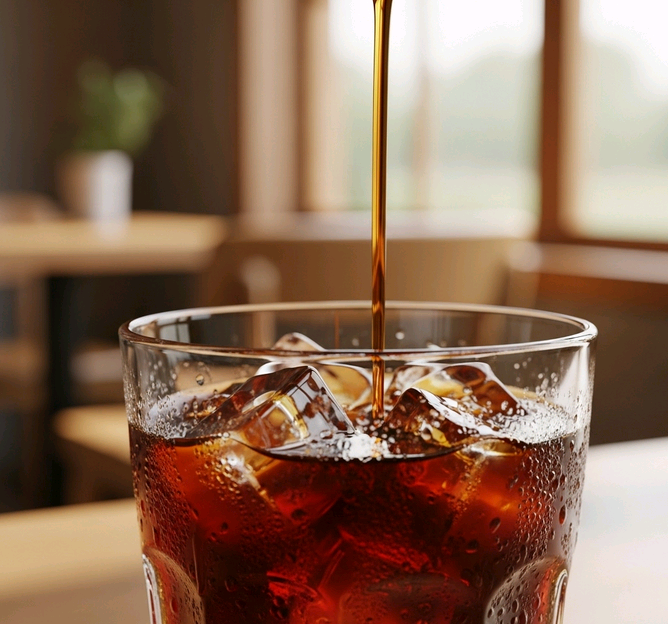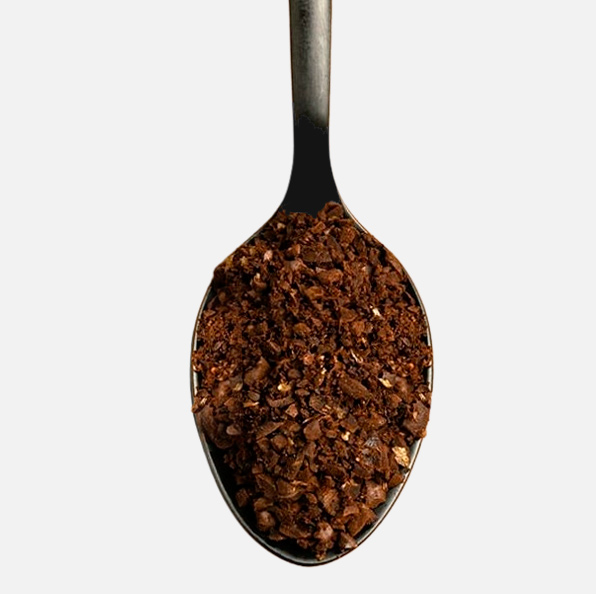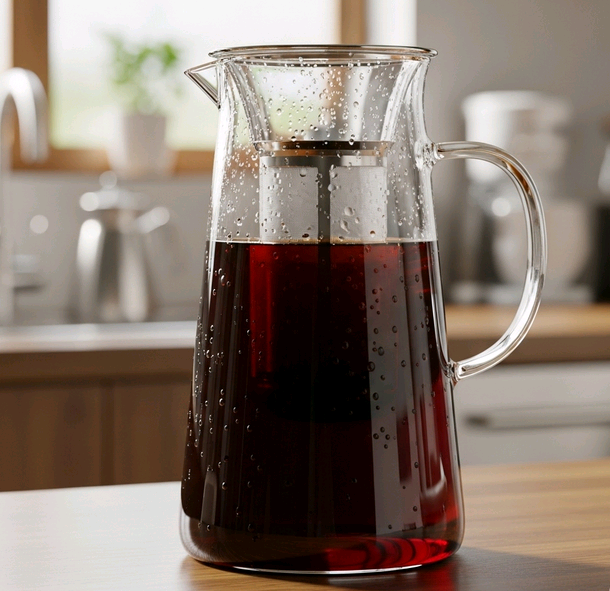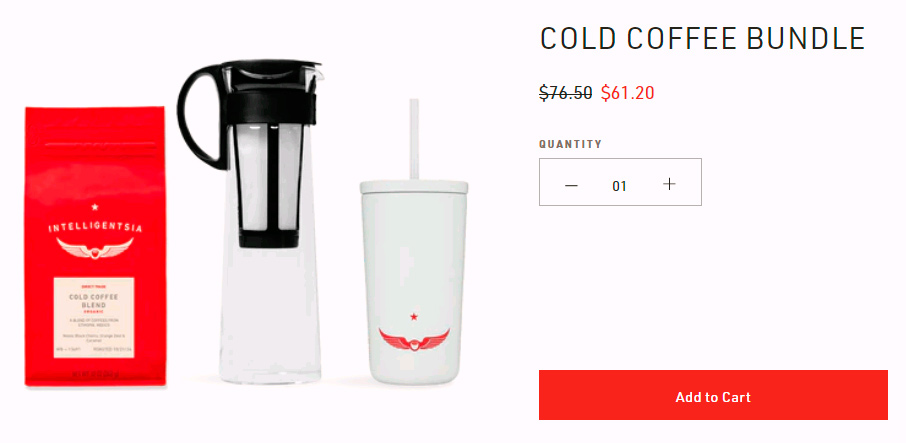Choosing Coffee Grounds for Perfect Cold Brew (With a Recipe)

Your Summer Secret Weapon: The Complete Guide to Choosing Coffee Grounds for Perfect Cold Brew
When the sun scorches hotter and the days stretch out longer, there is a beloved coffee trend that takes its rightful place in American kitchens and cafes: cold brew. Its smooth, low-acid nature and refreshing coldness make it the unchallenged master of summer coffee. But if you’ve ever tried making cold brew at home and found it tasted flat, was off, or was just a muddle mess, the trick quite often is not necessarily in the brewing process, but really, in the coffee grounds you’re using.
This ultimate guide will spill the beans on selecting the ideal coffee beans and brewing them to perfection to ensure your home-brewed cold brew always tastes great, rich, and full of life, just the deep, silky kick you crave.
The Cold Brew Canvas: Why Bean Choice Matters So Much
Cold brew is different from hot coffee in that time, not heat, is applied to extract the flavor. This cold extraction produces a coffee concentrate with significantly less acidity, a more even mouthfeel, and with inherently sweeter flavor. But since this slow extraction is employed, certain attributes of the coffee beans will become prominent, while others will get muted or worse, even turn into something unpalatable.
Although you can theoretically use whatever coffee grounds you have on hand for cold brew, truly outstanding results require a deliberative approach to your bean choice and preparation. All beans are not created equal when it comes to the canvas of flavor in cold brew.
The Grind is Gold: Unlocking Flavor with Proper Particle Size
If there is one golden rule about cold brew, it’s this: grind size is essential. This isn’t a tip; it’s the secret to a great cold brew.
The Coarse Imperative: Cold brew coffee should be ground coarse. Imagine in terms of coarse sea salt, kosher salt, or even breadcrumbs – orders of magnitude larger than what you’d grind for drip coffee or espresso.
Why Coarse is Important:
- Prevents Over-extraction: The extended immersion period in cold water implies finer particles would rapidly over-extract, resulting in a bitter, harsh, or sour cold brew. A coarse grind restricts the surface area, preventing an imbalanced, slow extraction.
- Reduces Sludge: Too much sediment and “sludge” in your brew is made by fine grounds, so filtration is a messy and annoying task. A coarse grind allows cleaner separation and clearer final product.
- Supports Filtration: It is far easier to filter out the bigger pieces, whether you are using cheesecloth, fine-mesh strainer, or a specialized cold brew container.
The Fallacy of Pre-Ground Coffee: Most pre-ground coffee sold in supermarkets is too fine for cold brew. Using it will essentially guarantee over-extracted, muddy, and bitter brew. Shelling out for a good burr grinder and grinding your own beans at home is worth it when it comes to cold brew quality.
The Roast Spectrum: Finding Your Cold Brew Sweet Spot
The roast of your coffee beans plays a crucial role in the flavor of your cold brew. Even as personal taste always prevails, certain roasts perform better in this brewing technique.
Medium to Dark Roasts: The Cold Brew Favorites: These roast levels are most suggested and preferred when it comes to cold brew. They contribute the desired smooth, rich, and low-acid character.
- Dark Roasts: For a really bold, full-bodied, and traditional cold brew, dark roasts are the best. Dark roasts provide rich, satisfying chocolate, nut notes and occasionally a smokiness, with none of the bitterness usually found in dark roasts when used in hot coffee.
- Medium Roasts: When one wants a less intense cold brew but with low acidity and smoothness nonetheless, a balanced medium roast can provide a balanced cup with sweeter or caramel notes.
Why Light Roasts Underdeliver: While wonderful in hot coffee due to their nuance and vitality, light roasts are often not as well adapted to cold brew. Cold water simply can’t bring out those delicate floral, fruity, or snappy acidic flavors. What’s left is typically a “grassy,” “sour,” or “weak” cold brew with minimal body and zing you’d want from a great light roast.
Looking for the ideal coffee beans for cold brew that perfectly match our recommendations?
Check out the Intelligentsia Cold Coffee Blend. This blend was crafted by Intelligentsia experts specifically for cold brewing, delivering that very low acidity, silky texture, and rich flavor we’ve discussed. It’s perfectly suited for enjoying a refreshing and incredibly smooth beverage, free from bitterness or harshness.
Origin & Flavor: Developing Your Signature Cold Brew
Aside from roast level, the origin of your coffee beans also plays a huge role in their inherent taste profile. In choosing for cold brew, certain flavor profiles are particularly well-suited to carry over.
Flavor Profiles to Look for: Look for beans that are renowned for their chocolate, nutty, caramel, earthy, and full-bodied flavor profiles. These are the flavor profiles that perform and emerge wonderfully in the cold extraction process.
Best Origins to Explore:
- Brazilian Beans: A common go-to classic favorite for their consistent chocolate and nutty flavors, providing an amazing base for a classic cold brew.
- Colombian Beans: May yield a balanced flavor with sweet nutty notes that carry over nicely into a silky cold brew.
- Sumatran Beans (Indonesia): Much prized for their deep, earthy, and often dark chocolate or spicy flavors, Sumatran coffees yield an intensely rich and heavy cold brew.
- Guatemalan Beans: Most Guatemalan coffees have inherent profiles that are already well-suited for traditional, balanced cold brew.
- Vietnamese Robusta: If your goal is to pack as much caffeine and a really strong, robust flavor into a cup, a Vietnamese Robusta can provide that intense kick.
Profiles to Update: Although excellent in hot cups, beans with very delicate, very citrusy, light, floral, or forceful citrus flavors (typically found in some of the East African beans like Ethiopian) become overpowered or lost in cold brew. The subtle qualities that make them stand out so brightly in a hot cup simply aren’t communicated so effectively with cold water.
Beyond the Beans: Cold Brew Tips for Success
Once you’ve selected your ideal beans and achieved that perfect coarse grind, a few more things will distinguish your cold brew:
- Freshness is Not Optional: Work only with coffee beans that have been roasted very recently and grind them immediately before you start your cold brew. Freshness contributes significantly to the flavor and aroma of your final product.
- Water Quality Is Important: As with any coffee, cold brew is primarily water. Work with quality, filtered cold water so that no off-flavors muddy up your brew.
- Master the Ratio: A nice and well-liked place to start when making cold brew concentrate is a 1:4 coffee grounds to water weight ratio. For example, 100 grams coffee to 400 grams (or ml) water. What this will yield is a concentrate that you can dilute later.
- Caffeine Punch, Low Acidity: Cold brew will always have a high concentration of caffeine per serving since it is already concentrated and has an extended extraction time, but it has gorgeous low acidity and is thus stomach-friendly.
Forget the fancy equipment and intimidating steps. This is my own “awesome and easy” cold brew recipe, designed for the best flavor with the least hassle. It produces that luscious, rich concentrate consistently, perfect for diluting and serving all week long.
Ready to start brewing your perfect cold brew?
Don’t just pick beans—choose a complete solution for flawless results!
To ensure you have everything you need for ideal cold brewing, consider the Intelligentsia Cold Coffee Bundle. It includes specially selected beans and the essential tools to create that smooth, rich, and refreshing cold brew we’ve talked about in detail. It’s the perfect way to begin or significantly enhance your home brewing experience.
Your Go-To Recipe: The Simply Perfect Cold Brew Concentrate
This method appreciates simplicity and quality so you can enjoy that low-acid, full-bodied cold brew without any bitterness. It’s designed to make a concentrate so you have the flexibility to make your drink to order every time.
- Makes: Roughly 3-4 cups of concentrate (6-8+ servings diluted)
- Prep time: 5 minutes
- Brew time: 12-18 hours
- Storage: 2 weeks in the fridge
What You’ll Need:

- Coffee: 1 cup (about 85-90 grams) of coarsely ground coffee. Remember our golden rule: it should look like coarse sea salt or breadcrumbs. (For the best flavor, choose a medium to dark roast with chocolatey, nutty, or earthy flavors like beans from Brazil, Colombia, or Sumatra.)
- Water: 4 cups (946 ml) of cold, filtered water. (The water quality makes a noticeable difference!)
- Large Container: A mason jar, pitcher, or other large non-reactive container with a lid (a minimum capacity of 5 cups).

- First Strainer: A fine-mesh sieve or colander.
- Second Strainer: Cheesecloth (multiple layers), a clean kitchen towel, or a pour-over filter (e.g., a Hario V60 or Chemex filter) placed into a funnel.
- Storage Container: An airtight jar or bottle for your concentrate.
The Simple Steps to Cold Brew Perfection:
- Mix & Stir: Pour your coffee grounds into your large container. Slowly pour in the cold, filtered water, being careful to get all the grounds wet. Stir carefully (enough to ensure all grounds are moistened – don’t over-stir!).
- Steep & Chill: Place a lid or plastic wrap over the container. Refrigerate for 12-18 hours to steep. For a milder, less intense brew, steep 12 hours. For a more intense, bolder concentrate, steep 16-18 hours. Don’t steep much beyond 24 hours or bitterness will start to sneak in.
- First Strain (The Big Guns): Once steeped, remove it from the fridge. Place your fine-mesh strainer or colander over a second, large bowl or container. Slowly pour the cold brew through the strainer to let most of the spent coffee grounds drain out. You’ll still see it being slightly cloudy.
- Second Strain (The Clarity Trick): This is where the magic happens for an absurdly smooth, grit-free cold brew. Line your fine-mesh sieve (or a pour-over funnel) with 2-3 layers of cheesecloth, a clean kitchen towel, or a paper coffee filter. Slowly pour the liquid from your first strain through this second filter. This step removes the remaining fine particles, resulting in a beautifully clear and incredibly smooth cold brew concentrate. Be patient – it takes a little time for the liquid to pass through.
- Store Your Liquid Gold: Pour your finished cold brew concentrate into an airtight jar or bottle. Refrigerate for up to two weeks.
Serving Your Masterpiece:
- Dilute to Taste: Cold brew concentrate is very concentrated! Start by mixing it with an equal quantity of cold water or milk (a 1:1 ratio). Taste and adjust to suit.
- Get Creative: Drink it over ice, add a splash of your favorite milk or creamer, sweeten to taste, or even use it as the base for coffee cocktails.
Enjoy your frozen in time, always flavorful, and just-right strong homemade cold brew!
Common Cold Brew Mistakes to Avoid
Even with good beans and intentions, there are several universal mistakes that can derail your cold brew. Steer clear of these pitfalls, and your cold brew experience will always be smooth and delicious:
- Warm or Hot Water Use: Cold brew is based on a cold water extraction to get the low acidity and smooth taste. The use of warm or hot water will end up producing something closer to standard iced coffee, usually with a higher acid level and a different taste than actual cold brew. Begin with cold, filtered water.
- Not Saturating Grounds Completely Initially: Regardless of how you combine your coffee and water, it’s easy for some of the grounds not to get wet or to clump together. If the whole coffee is not saturated initially, you’ll have uneven extraction, and you’ll end up with a weak or bad-tasting coffee from the dry spots. Stir it well but carefully to ensure that all grounds are wet.
- Skipping the Double Filtration: While a coarse first strain takes out the majority of the grounds, skipping the second, finer filtering process (through cheesecloth or a paper filter) is a common error. This renders the cold brew not just cloudy but occasionally gritty, or it will have sediment at the bottom of your glass, which detracts from the smooth mouthfeel.
- Not Diluting the Concentrate: Cold brew recipes typically yield a concentrate. One mistake is trying to drink the concentrate straight, leading to an overpowering or even bitter flavor. Always dilute your cold brew concentrate with water, milk, or liquid of your choice to taste.
- Steeping for Too Long or Too Short: While the perfect steeping time can vary, the biggest issue is straying too far from the 12-18 hour guideline. Too short of a steep will yield a weak, under-extracted cold brew. Steeping too far beyond 18-24 hours can, somewhat counter-intuitively, start to bring in unwanted bitter flavors or make the coffee taste “muddier,” as some compounds eventually over-extract.
The journey to your perfect strong morning cold brew is a journey of discovery. By learning about the value of a coarse grind, medium to dark roasts, careful selection of beans with rich, full-bodied flavor profiles, freshness considerations, and concerns for water quality, you’re halfway there. Try it out, discover your staples, and enjoy the extremely smooth, rich, and invigorating cold brew that will become your summer (and year-round!) favorite.
FAQs
Can you use regular ground coffee for cold brew?
Technically, yes, you can use regular pre-ground coffee for cold brew, but it’s not usually advised for best results. Most standard pre-ground coffee is too fine, which results in over-extraction, bitterness, and a murky end product.
What is the best ground coffee for cold brew?
The ideal cold brew ground coffee is coarse-grind, medium to dark roast coffee beans with flavor profiles that contain chocolatey, nutty, caramel, or earthy flavors. Origins such as Brazilian, Sumatran, and Colombian are commonly used.
What kind of coffee is a cold brew?
For cold brew, medium to dark roast coffee beans are typically used. These beans should have flavor profiles that complement cold water, such as chocolate, nutty, caramel, or earthy flavor. Any coffee can be used, but these types give the best outcome.
If I use fine ground coffee to make cold brew, what will occur?
If you use fine ground coffee to make cold brew, it will over-extract and result in a bitter, sour, or harsh taste. It will also produce an excess of sludge and sediment that will be difficult to filter and lead to a muddy, cloudy cold brew.
Can I use cheap coffee for cold brew?
Yes, cold brew can be produced from cheap coffee, but the taste of your end product will be as fine as the beans. While the cold brew process is able to mask minor imperfections, it will not transform low-quality beans into great coffee. Greater beans are best for the finest flavor.
Is pre-ground coffee terrible for cold brew?
Yes, pre-ground coffee is typically not suitable for cold brew. The big reason is that most pre-ground coffee is too finely ground for cold brew, which causes over-extraction, bitterness, and excessive sludge, so it becomes difficult to filter and tastes poorly. Freshly ground coarse coffee is the way to go.

